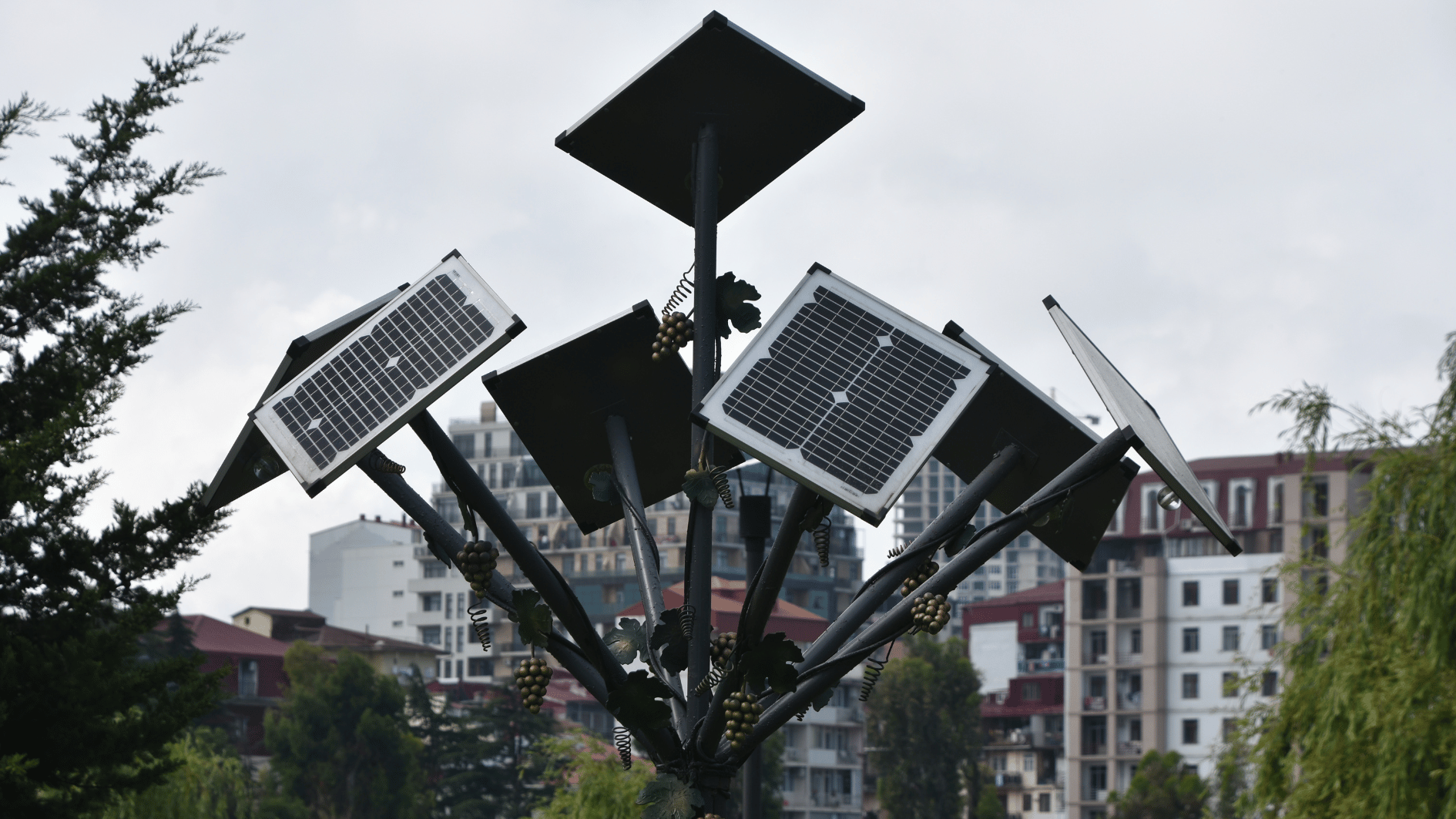Image source: Canva.com
Solar trees are emerging as an innovative and visually striking solution in the world of renewable energy. Combining aesthetics with functionality, these modern marvels offer a fresh approach to harnessing solar power. In this article, we’ll explore what solar trees are, how they work, their benefits, and why this trend is gaining traction worldwide.
What Are Solar Trees?
Solar trees are artistic and functional installations designed to resemble trees but are equipped with solar panels as “leaves” or “branches.” Unlike traditional solar panels mounted on rooftops or ground arrays, solar trees integrate solar technology into a more visually appealing and space-efficient design.
How Do Solar Trees Work?
The concept behind solar trees is straightforward: they generate solar power using photovoltaic (PV) panels, which are strategically placed to capture sunlight efficiently. Here’s a breakdown of how they function:
Design and Structure
Solar trees feature a trunk and branches designed to hold PV panels. These panels are positioned to maximize exposure to sunlight while blending seamlessly with the tree-like structure. The design can vary, with some solar trees mimicking the appearance of real trees and others adopting more abstract forms.
The PV panels installed on the solar tree capture sunlight and convert it into electrical energy. This energy is then collected and can be used to power nearby devices, feed into the grid, or be stored in batteries for later use.
Energy Generation
Integration with Infrastructure
Solar trees can be integrated into existing infrastructure, such as parks, streetscapes, and urban environments. They often include additional features like LED lighting, Wi-Fi hotspots, or charging stations for electric vehicles, enhancing their functionality and appeal.
Benefits of Solar Trees
Solar trees offer several advantages that make them an attractive option for both urban and rural environments:
Aesthetic Appeal
One of the most compelling features of solar trees is their design. They add a unique, artistic element to public spaces, parks, and urban areas, transforming conventional solar installations into eye-catching landmarks. This aesthetic appeal can enhance the visual landscape and encourage public interest in renewable energy.
Space Efficiency
In densely populated areas where space is at a premium, solar trees provide a compact and efficient solution for solar power generation. By utilizing vertical space and incorporating solar panels into an elegant structure, solar trees make the most of limited land and rooftop areas.
Integration with Urban Environments
Solar trees can be seamlessly integrated into urban settings, such as parks, sidewalks, and public squares. They offer an opportunity to combine renewable energy generation with urban design, making sustainable energy solutions more accessible and visible in everyday life.
Educational and Inspirational Value
Solar trees serve as educational tools, showcasing the benefits of solar technology in an engaging and accessible manner. They can inspire individuals and communities to consider renewable energy options and participate in sustainability efforts.
Multi-Functionality
Many solar trees are designed with additional features beyond energy generation. For example, they might include LED lighting for nighttime illumination, Wi-Fi hotspots for public access, or charging stations for electric vehicles. This multi-functionality adds value and utility to the installation, making it a practical asset for communities.
Where Are Solar Trees Being Used?
Solar trees are being installed in various locations worldwide, from urban centers to rural areas. Here are a few notable examples:
Public Spaces
Cities around the globe are incorporating solar trees into public spaces to promote renewable energy and enhance urban aesthetics. For example, solar trees have been installed in parks, plazas, and along streets, providing both functional energy and visual appeal.
Educational Institutions
Schools and universities are using solar trees as educational tools to teach students about renewable energy and sustainability. These installations not only generate clean energy but also serve as a hands-on learning experience for students.
Commercial and Residential Properties
Businesses and residential communities are increasingly adopting solar trees as a way to integrate renewable energy into their properties. These installations can complement traditional solar systems by adding an artistic and functional element to the property.
Challenges and Considerations
While solar trees offer numerous benefits, there are some challenges and considerations to keep in mind:

Cost
The initial cost of installing a solar tree can be higher than traditional solar panels due to the custom design and engineering involved. However, the long-term benefits and aesthetic value may justify the investment for many communities and organizations.

Maintenance
Like any solar installation, solar trees require regular maintenance to ensure optimal performance. This includes cleaning the panels and checking the structural integrity of the installation.

Efficiency
The efficiency of a solar tree can be affected by its design and the placement of the PV panels. Ensuring that the panels receive adequate sunlight and are positioned effectively is crucial for maximizing energy generation.
The Future of Solar Trees
The trend of solar trees is expected to continue growing as more communities and organizations seek innovative ways to integrate renewable energy into their environments. Advances in solar technology, combined with creative design and urban planning, will likely drive further adoption of solar trees and similar solutions.
As cities and towns around the world embrace sustainability and renewable energy, solar trees stand out as a promising and visually appealing option. They represent a harmonious blend of art, technology, and environmental stewardship, making them a symbol of the future of clean energy.
Solar trees are transforming the way we think about solar energy, offering a unique and aesthetically pleasing alternative to traditional solar panels. By integrating renewable energy into urban and public spaces, solar trees provide both functional benefits and visual appeal, making sustainable energy solutions more accessible and engaging.
As this innovative trend continues to take root, solar trees have the potential to inspire greater interest in renewable energy and contribute to a more sustainable future. Whether enhancing public spaces, serving educational purposes, or complementing residential and commercial properties, solar trees are proving that sustainability and beauty can go hand in hand.





